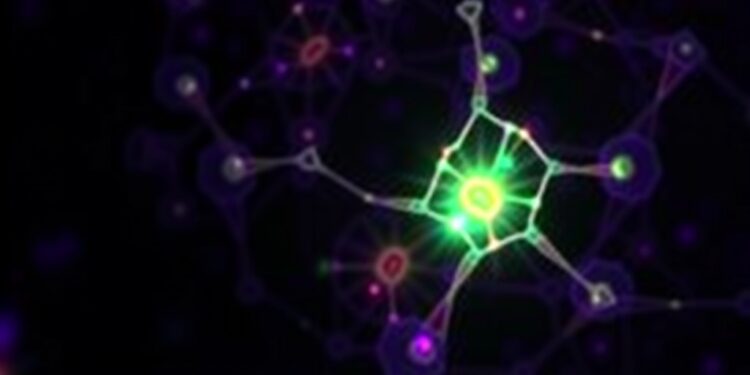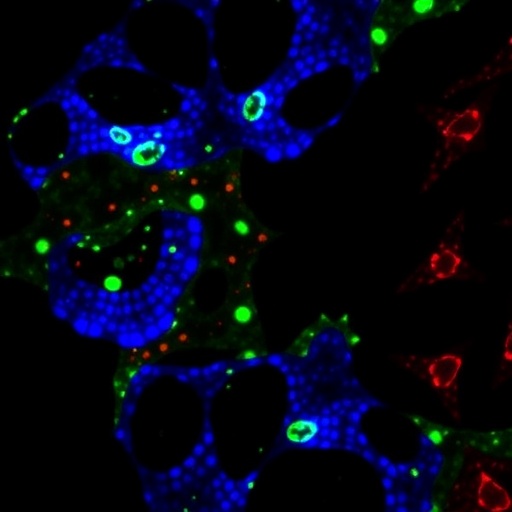Colorectal cancer (CRC) continues to pose a formidable challenge to healthcare systems worldwide due to its high malignancy and propensity for metastasis to crucial bodily organs. The burden this disease places on individuals and medical facilities alike cannot be overstated, prompting ongoing efforts to advance treatment methodologies. Despite these endeavors, existing therapeutic regimens, including chemotherapeutics and targeted therapies, grapple with significant limitations. These limitations often manifest as drug toxicity, the recurrence of tumors post-treatment, and the development of resistance—compounded by the genetic heterogeneity inherent in CRC cells. Given this backdrop, it is imperative that novel anti-tumor agents are discovered to meet the diverse genetic needs of CRC patients effectively.
A recent breakthrough in this area has emerged from a collaborative research effort spearheaded by teams from various esteemed institutions, including the Sun Yat-sen University Cancer Center and associated hospitals. Their work focuses on a novel compound known as Ce6-GFFY, which represents a novel strategy in the realm of photodynamic therapy (PDT). This innovative agent is fundamentally a third-generation photosensitizer, crafted through the covalent modification of a well-characterized photosensitizing agent, chlorin e6 (Ce6), paired with a bioactive GFFY peptide. The resulting molecular construct, Ce6-GFFY, has exhibited intriguing properties, notably forming stable macroparticles averaging 160 nm in size when suspended in solution.
The unique structural attributes of Ce6-GFFY underpin its mechanism of action, particularly its ability to exploit the enhanced permeability and retention (EPR) effect for targeted tumor infiltration. This phenomenon is crucial for effective local delivery of therapeutic agents, allowing Ce6-GFFY to permeate tumors more effectively than traditional agents. Upon exposure to a 660 nm laser, an excitation wavelength optimal for inducing photodynamic effects, Ce6-GFFY-triggered processes unveil a significant increase in reactive oxygen species (ROS) production within CRC cells. This ROS surge serves as a critical cytotoxic component in PDT, effectively inducing cell death in malignant cells.
Moreover, the research unveiled that treatment with Ce6-GFFY culminates in a marked elevation of calreticulin (CRT) expression in CRC cells. CRT acts as an “eat-me” signal, implicated in the process of immunogenic cell death (ICD). This immunogenic response is particularly significant, as it enhances the visibility of cancer cells to the immune system, potentially leading to a robust anti-tumor immune response. Such findings are highly promising, suggesting that Ce6-GFFY may not only directly obliterate cancer cells through ROS-mediated mechanisms but also prime the immune system to mount a broader attack.
In exploring the efficacy of Ce6-GFFY beyond laboratory conditions, the research team conducted in vivo studies using murine models. These investigations revealed that the photodynamic agent retains a prolonged half-life within the bloodstream of the test subjects, indicating effective systemic uptake and a prolonged therapeutic window. When combined with laser irradiation, the treatment demonstrably activated anti-tumor immunity, characterized by a notable increase in the infiltration of cytotoxic T cells into tumor sites while simultaneously thwarting the proliferation of myeloid-derived suppressor cells—known for their immunosuppressive capabilities. This dual action not only suppresses the growth of primary CRC tumors but proves effective against metastatic disease as well.
The implications of these findings suggest that Ce6-GFFY has the potential to redefine treatment paradigms for CRC. Unlike conventional therapies reliant on specific genetic profiles or pathways, Ce6-GFFY operates bypassing the complications associated with drug resistance and genetic mutations. This versatility may render it a vital therapeutic option for patients who have exhausted available treatment avenues, including those with pre-existing resistance to existing modalities. As resistance continues to plummet treatment success, agents like Ce6-GFFY present invaluable alternatives capable of addressing these challenges.
The development of Ce6-GFFY is not merely a technological advancement; it embodies a paradigm shift in cancer therapy. It signals a move towards more personalized and precise therapies that can adapt to the unique biological landscapes of individual tumors. As research continues to build on these findings, the hope is that this novel photosensitizer will pave the way for broader applications across the spectrum of malignancies, extending beyond colorectal cancer.
Furthermore, the therapeutic depth offered by PDT, particularly through agents like Ce6-GFFY, highlights the synergy between drug discovery and advanced imaging technologies that can be utilized to maximize therapeutic effectiveness while minimizing harm to healthy tissues. This balance is crucial, as it aims to refine treatment experiences for patients, potentially leading to improved outcomes and a better quality of life.
In conclusion, the advent of Ce6-GFFY presents a promising new strategy in the ongoing battle against colorectal cancer. By bridging innovative pharmacology with the principles of immunotherapy, this research holds the potential to alter the trajectory of treatment for one of the most prevalent and deadly forms of cancer. As the body of evidence supporting Ce6-GFFY continues to grow, we inch closer to unlocking its full therapeutic potential and impacting the lives of patients grappling with CRC.
The promise of photodynamic therapy remains a beacon of hope, particularly as we seek to expand our arsenal against cancers marked by their aggressive nature and elusive treatment responses. As clinical trials unfold and research continues, the medical community anxiously awaits the prospect of translating these findings into clinical practice, truly embodying the principle that innovation in cancer treatment can eventually lead to victory in the fight against cancer.
Subject of Research: Development of Ce6-GFFY as a novel photosensitizer for colorectal cancer therapy.
Article Title: Ce6-GFFY is a novel photosensitizer for colorectal cancer therapy.
News Publication Date: (Date not provided in the original text)
Web References: (Not provided)
References: DOI: 10.1016/j.gendis.2024.101441
Image Credits: (Not provided)
Keywords: Colorectal cancer, photosensitizer, Ce6-GFFY, photodynamic therapy, immunogenic cell death, cancer therapy, drug resistance.
Tags: Ce6-GFFY compound in PDTchallenges in colorectal cancer treatmentcollaborative cancer research initiativescolorectal cancer therapy advancementsemerging therapies for colorectal malignancygenetic heterogeneity in CRCimplications for cancer treatment methodologiesinnovative photosensitizers for cancernovel anti-tumor agents developmentphotodynamic therapy breakthroughsthird-generation photosensitizerstumor recurrence and resistance





